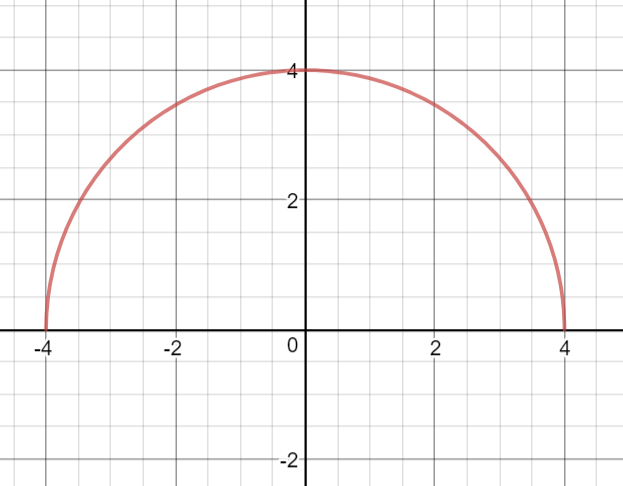The graph of f(x) = sqrt (16-x^2) is shown below. How do you sketch the graph of the function y = 3f(x)-4 based on that equation (sqrt (16-x^2)?

1 Answer
We start with the graph of
graph{sqrt(16-x^2) [-32.6, 32.34, -11.8, 20.7]}
We then will do two different transformations to this graph—a dilation, and a translation.
The 3 next to
Here's a graph of
graph{3sqrt(16-x^2) [-32.6, 32.34, -11.8, 20.7]}
Second: the
Here is a graph of
graph{3sqrt(16-x^2)-4 [-32.6, 32.34, -11.8, 20.7]}
Quick method:
Fill in the following table for a few values of
Then, plot

